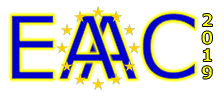Speaker
Description
Beam-driven plasma-wakefield accelerators(PWFAs) offer a unique regime for the generation and acceleration of high-quality electron beams to multi-GeV energies. Here we present an innovative hybrid staging approach, deploying electron beams generated from a compact laser-driven wakefield-accelerator(LWFA) as drivers for a PWFA. This scenario exploits the capability of LWFAs to deliver shortest, high peak-current electron bunches[1] with the prospects for high-quality witness beam generation in PWFAs[2]. The feasibility of the concept is presented through exemplary particle-in-cell simulations, followed by experimental results from extensive campaigns performed at high-power laser facilities; ATLAS (LMU, Munich), SALLE-JAUNE (LOA, Paris) and DRACO (HZDR, Dresden). Using few-cycle optical probing we captured clear images of beam-driven plasma waves in a dedicated plasma stage, allowing us to identify a non-linear plasma-wave excitation regime. Trailing the plasma waves, the impact of ion motion to the transverse modulation of the plasma density was observed over many picoseconds[3]. Furthermore, we demonstrate for the first time the acceleration of distinct witness beams in such LWFA-driven PWFA(LPWFA) setup, showcasing an accelerating gradient on the order of 100 GV/m. These milestones pave the way towards compact sources of energetic ultra-high brightness electron beams as well as a miniature model for large scale PWFA facilities.

